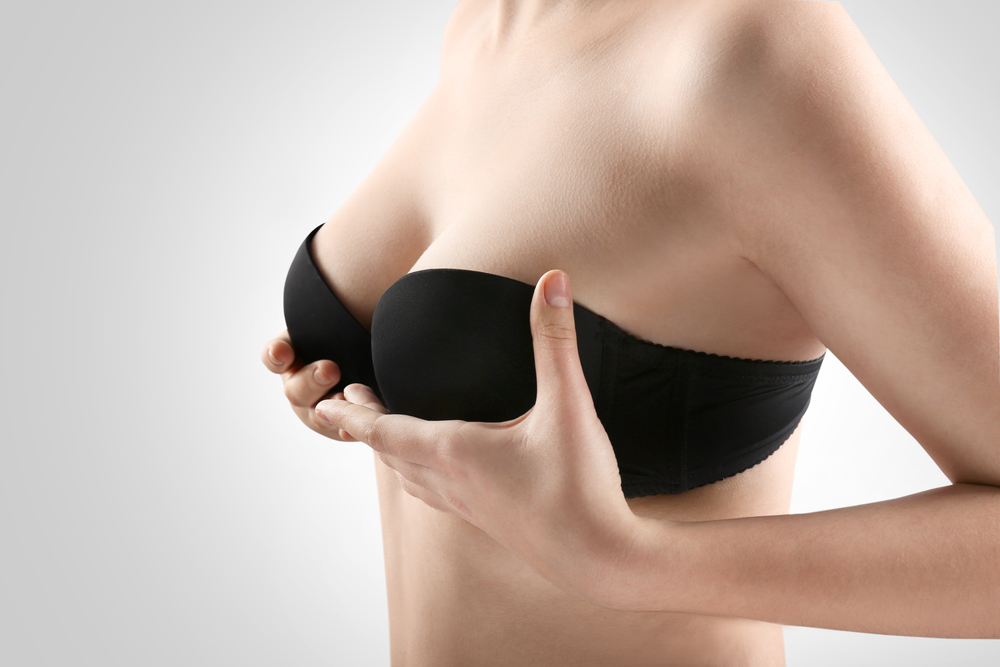Sleep deprivation, dehydration, and aging are generally to blame for sunken, deep-set eyes. Thankfully, this common aesthetic concern can be effectively addressed through certain lifestyle changes and cosmetic procedures. We asked the experts for advice.
What Causes Sunken Eyes?
The loss of fatty tissue around the eyes can be the result of aging, hereditary factors, poor lifestyle choices, or serious illnesses and injury.
Aging
In most cases, sunken eyes are caused by aging. We generally begin to notice these changes in our late 30s or early to mid 40s, as loss of moisture and volume cause shadows and dark circles around the lower eyelids. Facial bone density also decreases as the years go by, and the support structures that hold things together slowly lose their integrity. This produces a hollowing effect in different areas of the face.
A similar process can take place in the upper eyelids. “There, loss of fatty tissue can also create a sunken appearance,” says Flora Levin, MD, a board-certified oculoplastic surgeon in Westport, CT.
And as the skin’s natural ability to produce collagen diminishes, it starts to thin and become translucent. “With age, as the eyelid skin stretches, it can fold and droop,” says Levin. “To make matters worse, in some cases low-lying or heavy eyebrows will cast a shadow onto the eyelids.”
Genetics
“If the right amount of fatty tissue is present in the lower eyelids — between the eyelashes and the outline of the bony socket — this causes a smooth transition between the eyelid and the upper cheek, with no hollowness or depression,” says Levin.
For some unfortunate individuals however, deep-set eyes are an inherited trait.
“It has to do with the bony and soft tissue anatomy of the face and eyelids,” Levin explains. “Thin eyelid skin does little to hide the muscle and bone just beneath it. If someone is born with less fat in that area, or if it’s lost, it will give the eye area a sunken, deep-set appearance.”
Lifestyle Factors
Studies show that lack of sleep is one of the main causes of premature skin damage and aging. Smoking is also a common culprit: most dermatologists agree that it breaks down collagen and compromises the skin’s elasticity. This, in turn, causes the skin to sag, which may lead to sunken-looking eyes.
Other lifestyle factors include dramatic weight loss, which can cause blood vessels around the eyes to become more apparent, and sun damage, which may darken the skin beneath the eyes.
Medical Concerns
Sunken, deep-set eyes can also be caused by poorly performed blepharoplasty procedures, orbital fractures and trauma, permanent bruising, certain glaucoma medications, and radiation to treat tumors around the eyes and eye socket.
In some very specific cases, rare autoimmune diseases and metastatic cancer can result in fat atrophy, but this is usually accompanied by other signs or symptoms.
Dehydration can also lead to sunken eyes, which in some instances can be an indicator of more serious health concerns. This is particularly the case in babies and children, who are more vulnerable to dehydration from stomach viruses.
Treatments and Cosmetic Procedures for Sunken Eyes
“Most of the time, deep-set eyes are not dangerous and may simply be due to natural factors,” says Samuel Lin, MD, a board certified plastic surgeon in Boston. However, “if sunken eyes worsen over time — despite attempts to address potential causes such as lack of sleep or dehydration, or are accompanied by other symptoms, patients should consider seeing a doctor. The same goes for patients who experience troubles with their vision.”
And of course, if you want to improve your appearance, you may consider visiting a board-certified plastic surgeon or oculoplastic surgeon.
Before determining whether or not you are a good candidate for surgical treatment, the physician will assess your medical history and conduct a physical examination to identify other symptoms that could be indicative of more serious illnesses.
“In some cases lab testing may be ordered to rule out medical causes,” says Lin. “And if any underlying lifestyle habits are identified — smoking or excessive sun exposure, for instance — those should always be addressed before cosmetic procedures are considered.”
If the issue is related to aging or genetics, minimally invasive treatments and surgical options can be pursued.
Under Eye Fillers
According to Levin, most treatments are aimed at restoring lost volume. This is done either through fat transfer or off-label use of dermal fillers.
“Unlike other parts of the face, the eyelid skin and underlying tissue is very thin,” says Levin. “Therefore, only dermal fillers with specific properties can be used to achieve the desired result. Hyaluronic acid (HA) injections are performed deep under the skin to fill out hollow areas and create a smoother transition between the eyelid and the cheek. When the desired effect is achieved, this usually lasts 9-12 months. In patients who also have lower eyelid ‘bags,’ the fat can be trimmed and repositioned to add volume.”
Dermal fillers treatments are typically painless and only takes a few minutes. However, they are also temporary, and must be repeated approximately once a year to maintain the effects.
Surgical Options
“Patients with excess upper eyelid skin can benefit from blepharoplasty or an eyelid lift, combined with fat repositioning,” says Levin. Those with heavy, low-lying eyebrows also make ideal candidates for an eyebrow lift.
These surgical procedures are obviously far more invasive than dermal filler injections, and entail more postoperative downtime and potential complications. That being said, surgery provides a longer-term solution to deep-set eyes.
Choosing a Surgeon
As Levin points out, the eyes are not only a vital organ, but also extremely powerful in conveying how we feel.
“Sometimes, their appearance can be misleading: showing anger when we feel happy, tired and drawn-out when we feel rested, or aged when we don’t feel our chronological age. Therefore, restoring a youthful and rejuvenated appearance to the eyes can be a very powerful tool.”
If you opt for cosmetic surgery, make sure you choose a board certified plastic surgeon, or an oculoplastic surgeon with extensive experience performing surgery on the eyelid area.
According to Lin, plastic surgeons may also have differing opinions and preferences in technique for correcting a sunken eyelid. For example, some surgeons may prefer using fillers instead of fat grafting.
“One single approach isn’t necessarily better than the others,” he says. “It depends on what you’re trying to achieve. As such, patients should assess the respective plastic surgeons’ expertise or preference for certain techniques before making their choice. In some cases, a healthier lifestyle and routine may also help address the issue, without resorting to more drastic measures.”









